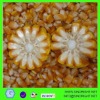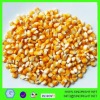- Organic Intermediate[9]
- Chemical Auxiliary Agent[1]
- Organic Acid[1]
- Amine[1]
- Sulphate[3]
- Other Organic Chemical[1]
- Alcohol & Hydroxybenzene & Ether[1]
- Oxide[1]
- Catalyst[1]
- Nitrate[2]
- Carbonate[1]
- Chloride[2]
- Alkali[1]
- Pigment[1]
- Dyestuffs[10]
- Food Additives[10]
- Bakery Decoration Ingredients[1]
- Feed Additives[9]
- Animal Feed[2]
- Veterinary Medicine[4]
- Other Chemicals[1]
- Pharmaceutical[10]
- Dental Equipments[10]
- Kitchen Knives[1]
- Pumps[1]
- Toilet Plungers[1]
- Electrical Ceramics[1]
- Nitrogen Fertilizer[1]
- Electric Screwdriver[10]
- Cooling System[4]
- Plastic Film[10]
- Contact Person : Mr. Du Harry
- Company Name : Sinoright International Trade Co., Ltd.
- Tel : 0086-411-39210844
- Fax : 0086-411-39210855
- Address : Liaoning,Dalian,106# Taihua Building B Area Free Tax ZOne Dalian
- Country/Region : China
- Zip : 116600
first grade corn
first grade corn
1. good quality2. earliest shipment3.competitive price4.professional service
Corn known in many English-speaking countries as corn or mielie/mealie, is a grain domesticated by indigenous peoples in Mesoamerica in prehistoric times. The leafy stalk produces ears which contain seeds called kernels. Though technically a grain, maize kernels are used in cooking as a vegetable or starch. The Olmec and Mayans cultivated it in numerous varieties throughout central and southern Mexico, cooked, ground or processed through nixtamalization. Between 1700 and 1250 BCE, the crop spread through much of the Americas. The region developed a trade network based on surplus and varieties of maize crops. After European contact with the Americas in the late 15th and early 16th centuries, explorers and traders carried maize back to Europe and introduced it to other countries. Maize spread to the rest of the world due to its ability to grow in diverse climates. Sugar-rich varieties called sweet corn are usually grown for human consumption, while field corn varieties are used for animal feed and as chemical feedstocks.
Maize is the most widely grown crop in the Americas with 332 million metric tons grown annually in the United States. Approximately 40% of the crop - 130 million tons - is used for corn ethanol.[1] Transgenic maize (Genetically Modified Corn) made up 85% of the maize planted in the United States in 2009.[2] While some maize varieties grow to 12 metres (39 ft) tall,[3] most commercially grown maize has been bred for a standardized height of 2.5 metres (8.2 ft). Sweet corn is usually shorter than field corn varieties.
Maize kernelsThe kernel of maize has a pericarp of the fruit fused with the seed coat referred to as "caryopsis", typical of the grasses, and the entire kernel is often referred to as the "seed". The cob is close to a multiple fruit in structure, except that the individual fruits (the kernels) never fuse into a single mass. The grains are about the size of peas, and adhere in regular rows round a white, pithy substance, which forms the ear. An ear contains from 200 to 400 kernels, and is from 10–25 cm (4–10 in) in length.[citation needed] They are of various colors: blackish, bluish-gray, purple, green, red, white and yellow. When ground into flour, maize yields more flour, with much less bran, than wheat does. However, it lacks the protein gluten of wheat and, therefore, makes baked goods with poor rising capability.
A genetic variant that accumulates more sugar and less starch in the ear is consumed as a vegetable and is called sweet corn.
Immature maize shoots accumulate a powerful antibiotic substance, 2,4-dihydroxy-7-methoxy-1,4-benzoxazin-3-one (DIMBOA). DIMBOA is a member of a group of hydroxamic acids (also known as benzoxazinoids) that serve as a natural defense against a wide range of pests, including insects, pathogenic fungi and bacteria. DIMBOA is also found in related grasses, particularly wheat. A maize mutant (bx) lacking DIMBOA is highly susceptible to be attacked by aphids and fungi. DIMBOA is also responsible for the relative resistance of immature maize to the European corn borer (family Crambidae). As maize matures, DIMBOA levels and resistance to the corn borer decline.
Because of its shallow roots, maize is susceptible to droughts, intolerant of nutrient-deficient soils, and prone to be uprooted by severe winds.
first grade corn


